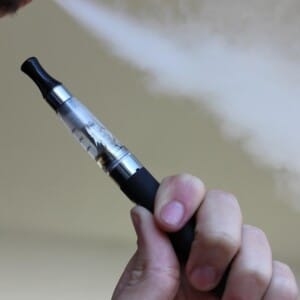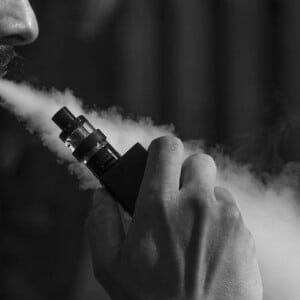The term ‘migraine’ with headaches
While most people readily equate the term ‘migraine’ with headaches, the truth is that not all migraines involve those. It’s just that the two most well-known & common types of migraines; classical migraine & common migraine, present with intense headaches. Medically speaking, migraine is a condition characterized by altered sensations that can occur at any age & in any part of the body. As an example, a baby with a pattern of ‘cyclical vomiting’ is suffering from migraine that presents in the form of gastrointestinal disturbances, rather than manifesting in the neurotypical region. In this article know about the Vestibular Migraine treatment.
This type of migraine,
also known as abdominal migraine, is most common among children, although adults can sometimes present with this condition too. When this happens, it is often known as Irritable Bowel Syndrome migraine, which is sometimes also associated with motion sickness, facial pains, & joint pains, although headaches are not a primary feature of this type of migraine.
Similarly, Vestibular Migraine is a medically recognized term for a type of migraine that primarily presents with dizziness symptoms. The duration of Vestibular Migraine attacks varies from patient to patient, lasting for a few seconds in some individuals to a few days in some others. Some patients may even experience chronic vestibular migraines that last for a lengthy amount of time. Vestibular Migraine attacks usually occur without headaches, although in about half of the cases, patients report headaches of varying intensities & changes in visual perception after an episode.
More typically, Vestibular Migraines are associated with nausea, vomiting, sweating, flushing, diarrhea & changes in visual perception like blurring, seeing flashing lights & difficulties in concentration or focus issues. Patients also experience photo & sound sensitivity, where they report having problems with bright lights & loud sounds. Along with these common features of vestibular migraines, some patients also experience extreme fatigue, tiredness, & a need to sleep.
Who is affected by Vestibular Migraine?
Vestibular Migraine is by far the most common cause of recurrent spontaneous vertigo episodes, & is the second most common vestibular disorder after Benign Paroxysmal Positional Vertigo (BPPV). It affects about 10% of all migraine patients. Vestibular Migraine may occur at any age, & females are three times more likely to experience vestibular migraines as compared to males. This is also has a genetic component, with most patients showing signs of a familial occurrence of the disorder.
Vestibular Migraine also shows a strong relationship with Meniere’s disease, as about half of Meniere’s Disease patients experience at least one migraine symptom during a Meniere’s attack. The two disorders often appear simultaneously in about 40% of patients with Meniere’s disease. This discovery should prompt doctors to actively consider Vestibular Migraines in any & all Meniere’s Disease patients, thus ensuring they get proper treatment for both maladies.
There is also a trend among young kids diagnosed with Benign paroxysmal positional vertigo (BPPV), wherein initial vertigo attacks tend to develop into typical migraine headaches later in life.
Vestibular Migraine diagnosis:
Vestibular Migraine diagnosis is made on the patient’s history. The diagnosis helps distinguish the condition from Benign Paroxysmal Positional Vertigo (BPPV), as it’s medically very similar to it. One important factor in diagnosing Vestibular migraines is the intensity & frequency of the attacks; they generally last seconds, minutes, hours, & in some cases, even days. The attacks are also generally not accompanied by headaches. Another important factor is the presence of visual & sound symptoms like photosensitivity & sound sensitivity in Vestibular Migraine patients.
These symptoms are usually absent in patients with Meniere’s Disease & BPPV, & thus, is an important distinction used for Vestibular Migraine diagnosis. Another key feature used in diagnosing Vestibular Migraine is the extreme fatigue & tiredness patients experience immediately after the attacks. Such intense fatigue is usually absent in patients with other vestibular disorders like Meniere’s Disease, BPPV, etc.
Physicians have to exercise greater caution while diagnosing Vestibular Migraine, as its symptoms can greatly mimic those of Meniere’s Disease. Without proper expertise & guidance, it is very easy to mistake Vestibular Migraine as Meniere’s Disease, which can considerably affect the treatment methods for the condition. Vestibular Migraine is also known as migrainous vertigo, migraine-associated dizziness, migraine-related vestibulopathy, & recurrent vertigo.
Although the internationally recognized term (given by the Barany society) is vestibular migraine
Vestibular Migraine treatment
Migraines, in general, are related to anxiety & depression levels of affected individuals, with stress being the most common cause of all. Most Vestibular Migraine patients have one or two specific triggers, including stress, anxiety, & any other neurological conditions. A large part of Vestibular Migraine treatment hinges on effectively isolating & focusing on reducing the effect of these triggers in patients.
The 5 most common triggers for patients with Vestibular Migraines are:
- Stress & anxiety,
- Poor sleep schedules, getting either too little or too much sleep,
- Prolonged hunger & dehydration, missing meals & not intaking enough water & fluids,
- Certain specific dietary triggers, including some common foods & caffeine especially,
- Certain hormonal changes that take place during menstruation, menopause, & puberty
Besides these common vestibular migraine triggers, there are also a variety of external triggers. These include exposure to a certain form of lighting & ventilation, changes in the weather, smoking, & certain strong odors.
The initial stages of Vestibular Migraine treatment are usually education, in which the doctor informs the patient of their condition, & their specific triggers. The patient is then required to keep a journal of their triggers, & try to avoid those as best as they can. Depending on the severity & the particular nature of the patient’s condition, the doctor may also recommend a specific vestibular migraine diet & certain vestibular migraine exercises.
These exercises may or may not have elements of the various exercises for dizziness, usually recommended to patients in case of Vertigo treatment. More often than not, these dietary & lifestyle changes are sufficient to tackle Vestibular MIgraine attacks & reduce their intensity, with a success rate of close to 90%!
Medication, although not generally recommended, is needed only in a handful of cases, usually involving chronic vestibular migraine coupled with some other pressing neurological issues.
As for the titular question of the blog, yes, anxiety can in fact, cause Vestibular Migraines.
In those cases where patients are already suffering from vestibular migraine, anxiety can exacerbate & worsen the symptoms & increase the severity & frequency of the attacks.
Hence, indulging in anxiety-reducing activities like meditation, yoga, getting enough sleep, & practicing certain relaxing techniques can go a long way towards effective Vestibular Migraine treatment.




